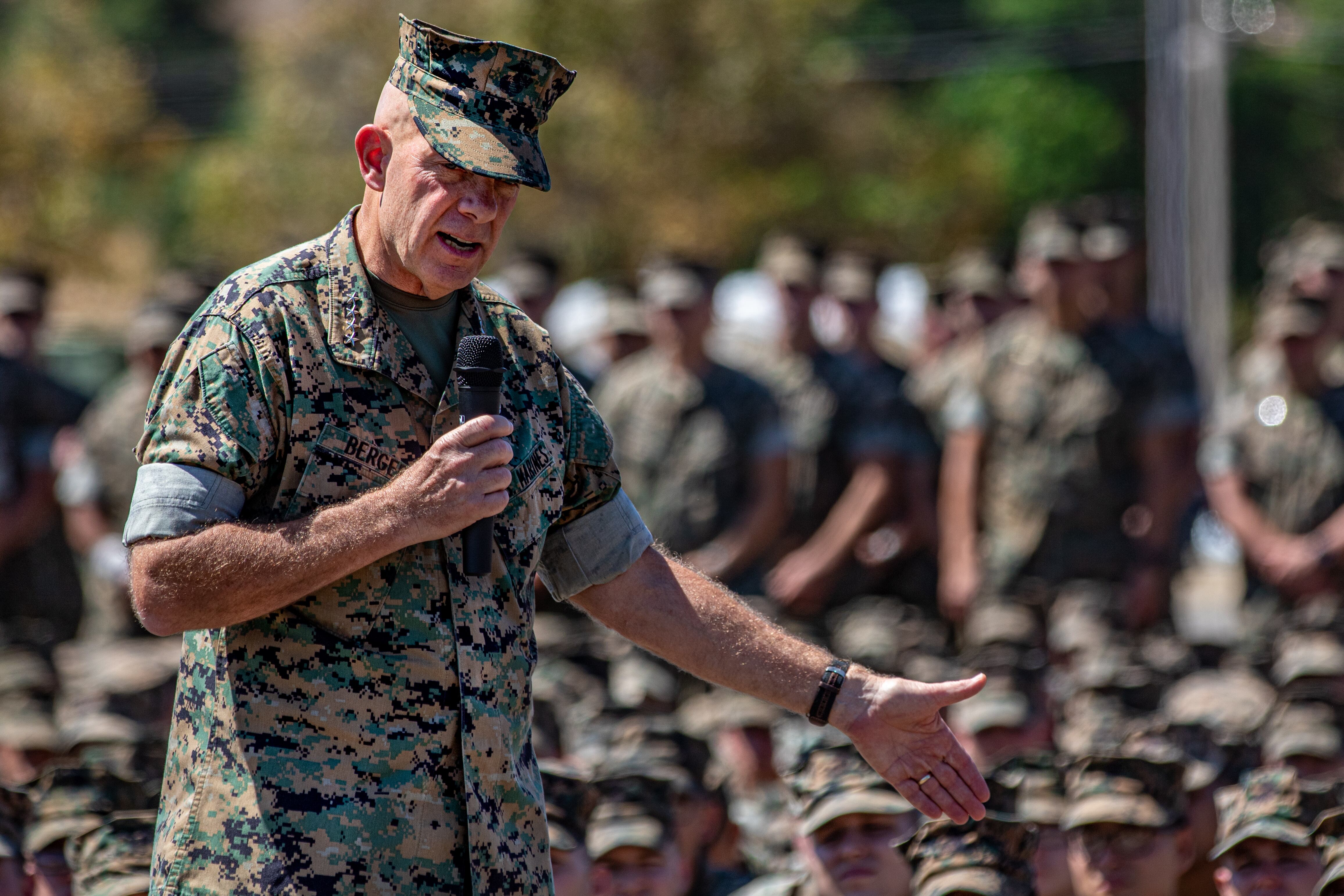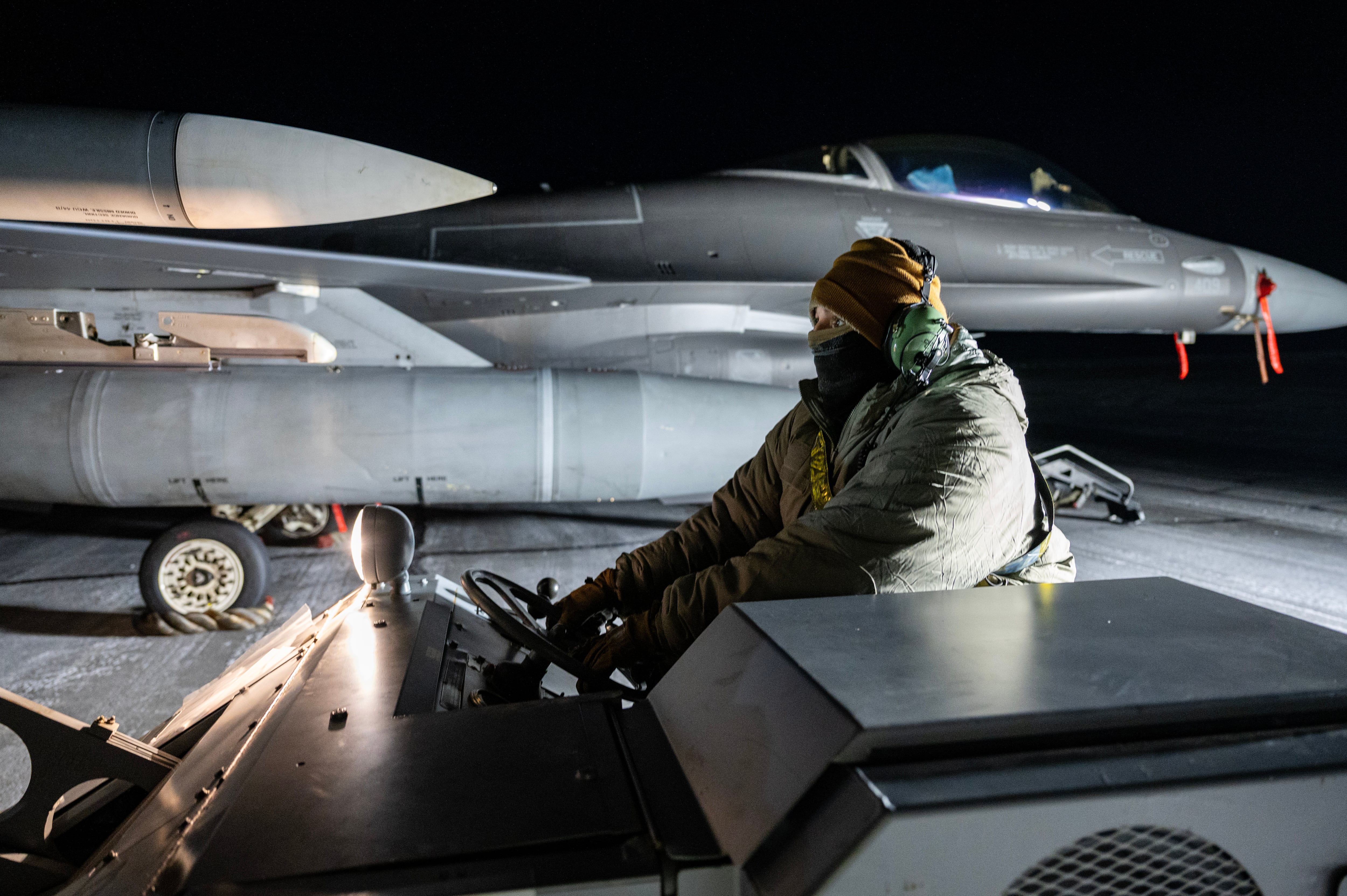ARLINGTON, Va. – The Marine Corps is stepping off on a 10-year march to transform itself from a force that’s currently suited to 1990s conventional warfare and instead to provide commanders with mobile units in bad guys’ backyards with “low signatures, bad attitudes and toolkits full of disruptive capabilities.”
That’s the message Commandant Gen. David H. Berger shared with more than 500 attendees at the annual Marine Association and Foundation Ground Dinner here on Thursday.
And that means divesting of some capabilities while investing in others. And the top Marine isn’t going to slow walk these changes. That’s because incremental moves in these areas will only serve to allow adversaries such as China and Russia to outpace Marine adaptations.
“We may need to get smaller, trade some parts we’ve had for a long time but are not a good fit for the future,” Berger said.
RELATED

That’s because what the Marine Corps has to offer to the joint fight must be unique and include those disruptive capabilities.
“Our ability to conduct sea control and sea denial operations both from the sea and from key maritime terrain is an essential naval capability in modern armed conflict,” Berger said. “That’s my premise.”
“It’s not a nice to have,” he said. “It is essential.”
Those mobile, bad attitude, toolkit-packing Marines are focused on a small set of tasks to achieve sea control and denial: “sinking ships, shooting down planes, killing enemy forces inside the area and stopping all forces from coming in.”
That means reducing or eliminating money going toward manned antiarmor ground and aviation platforms, manned, traditional towed artillery that can’t be modified to fire hypervelocity projectiles, short-range mortar systems that lack precision, lethality and range, nonlethal short range drones and excess equipment being kept in administrative storage.
Areas where the Corps needs to spend its coin? Low cost, lethal air and ground unmanned platforms, unmanned long range surface and subsurface vehicles, mobile, rapidly deployable rocket systems, long range precision fires, loitering munitions across the echelons, mobile air defense and counter-precision guided munitions capabilities, signature management, electronic warfare and expeditionary airfield.
Some of that has come from planning, a lot from the past 18 months’ worth of wargames against various iterations of what Marines might face in the near future from peer competitors, Berger said.
A recent, massive exercise involving more than 10,000 Marines from 2nd Marine Division conducting a force on force exercise at Marine Corps Air Ground Combat Center in Twentynine Palms, California, helped expose some of the needed changes, said Lt. Gen. George Smith, deputy commandant for Plans, Policies, and Operations.
Smith noted the exercise showed atrophied skills and areas where training and equipment is needed to meet the existing capabilities of adversaries.
Those include signature management, basic fieldcraft, command and control in degraded environments, deception and decoy, electronic warfare, information operations and sustainment.
And all of those need to be done inside of the “Weapons Engagement Zone” for the Marines to be the “stand in” force taking on the role of both blunt and contact layer in any potential future fight.
“We are the frontline,” Berger said.
Earlier that day, Brig. Gen. Robert Fulford, the commandant’s legislative assistant spoke to the Navy League, noting similar divestment work that must be done for the force changes envisioned by his boss.
““We are going to need to divest of certain critical capabilities that we have come to enjoy within the Marine Corps,” Fulford said at a special topic breakfast held by the Navy League, Thursday. “We built a Marine Corps to fight and win a long, sustained ground campaign," he added.
Fulford said the Corps’ heaviest land equipment is likely one area where the future cuts would take place.
“However, we’re also very heavy at this point and so that force and its ability to embark aboard some form of sea-base lift, there’s a fundamental mismatch," the general said. “What we’re going to need to do is get lighter, we’re going to need to become more distributed and more mobile.”
Todd South has written about crime, courts, government and the military for multiple publications since 2004 and was named a 2014 Pulitzer finalist for a co-written project on witness intimidation. Todd is a Marine veteran of the Iraq War.





